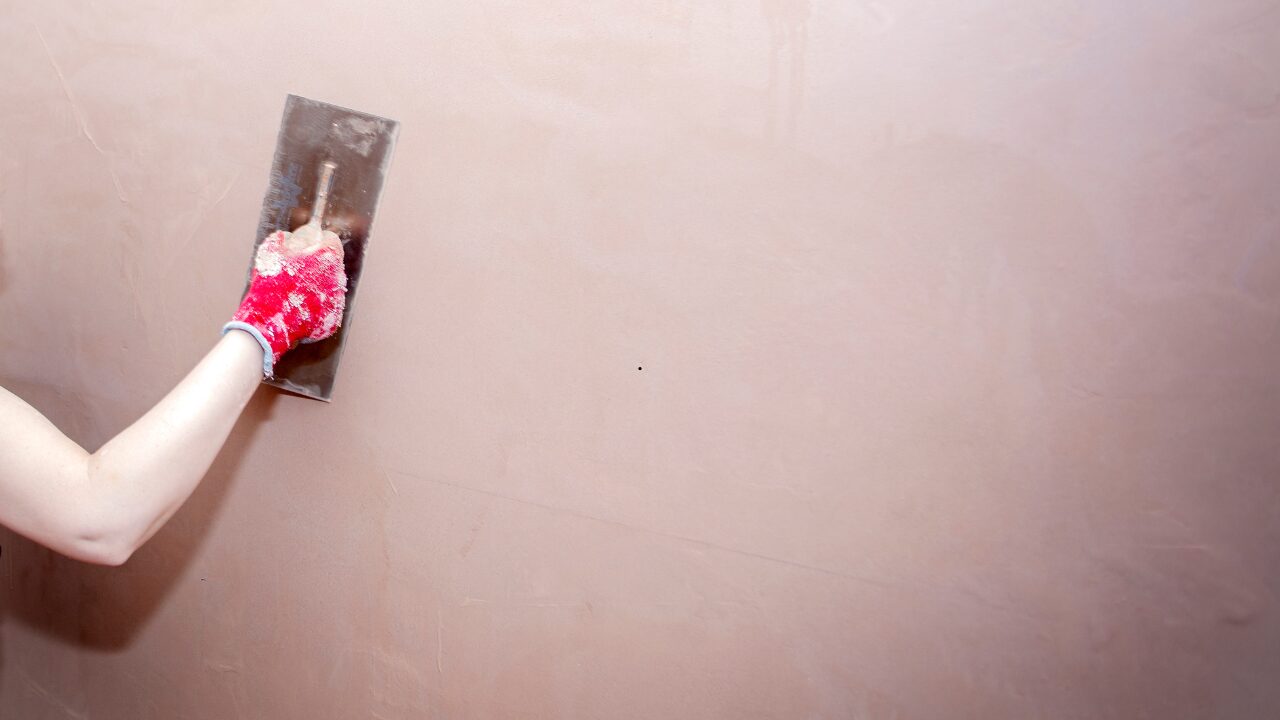Plastering might seem like a straightforward task, yet it’s a crucial aspect of construction that significantly affects both the aesthetics and durability of your walls.
Opting for budget solutions may appear tempting, offering immediate savings that are hard to resist. Choosing cheaper plastering options can lead to longer-term expenses and avoidable headaches.
Cheap plasterwork often results in issues such as cracks, uneven surfaces, and poor finishes, which undermine the visual appeal of any space.
These flaws necessitate additional repairs sooner than anticipated, diminishing any initial cost savings. Well-executed plasterwork provides a strong base for further decoration and ensures the longevity of a property’s walls.
Investing in quality plasterwork from the start not only enhances the property’s value but also lowers future maintenance costs. Properly plastered walls are resilient and form a reliable framework for creative interior design choices.
For those considering the superficial allure of a low-cost plastering job, it’s worth reassessing potential hidden costs and prioritising quality from the beginning.

Table of Contents
Unveiling the True Cost of Low-Quality Plastering
Choosing cheap plastering options might save money initially, but risks and hidden costs can emerge. These include financial burdens that grow over time and potential decreases in property value, affecting overall investment worth.
Long-Term Financial Implications
Opting for low-quality plastering often means compromising on material durability and craftsmanship. Initial savings quickly dissipate as the need for frequent repairs arises. Cracks, peeling, and uneven surfaces demand attention that can compound over months and years.
Repair costs accumulate, significantly impacting household budgets. Ensuing maintenance becomes a routine expense, negating initial savings. Furthermore, poor plaster can lead to moisture issues, causing additional problems. Moisture ingress may necessitate extensive treatment, further increasing expenses and complexity.
Ultimately, investing in quality plastering reduces long-term financial strain by minimizing repair frequency and severity, preserving the integrity of structures over time.
Impact on Property Value
Properties with low-quality plastering may face decreased market value. Visible imperfections and damage deter potential buyers, who anticipate investing more for necessary repairs.
A house’s aesthetic appeal significantly influences buyers’ perceptions. Cracking, uneven textures, or visible patches diminish a property’s visual attractiveness and suggest deeper structural concerns. These factors can lead to lower offers, extended time on the market, or the need for significant price reductions.
Investing in quality plastering enhances property appearance and stability. It assures buyers of lesser immediate repair needs and boosts property value. Well-executed plaster jobs contribute to a home’s overall market appeal. Buyers often prioritise properties requiring minimal immediate expenditure, valuing the reassurance of quality maintenance.

Durability and Performance: Cutting Costs Can Compromise Both
Opting for cheaper plastering materials and services often results in lower durability and increased maintenance needs. This section explores how cost-cutting in plastering impacts both the longevity of the work and the financial implications of frequent repairs.
The Risks of Premature Deterioration
When low-cost materials are used, the plaster may not adhere well to surfaces, leading to cracks and peeling over time. Substandard plaster can also be more susceptible to moisture. This accelerates the deterioration process, especially in areas with high humidity or variable temperatures.
Using inferior-quality plastering techniques often means that the plaster coats are applied unevenly. Poor application can result in weak spots that are prone to damage. Such imperfections not only affect aesthetics but can also compromise the structural integrity of walls and ceilings.
The Hidden Costs of Frequent Repairs
While initially cheaper, the use of low-quality plaster often leads to repeated repairs. Each repair involves costs not just for new materials but also for labour and time. Frequent touch-ups increase total expenses, making it more costly than investing in quality plastering from the start.
Many homeowners find themselves paying for unexpected repairs when low-grade plaster fails sooner than expected. These repairs can involve not just patching up the walls but also fixing damage caused to the underlying structures. Such situations can lead to significant financial outlay over time.
The Aesthetic Price of Poor Workmanship
Poor plastering can greatly affect the beauty of interiors and lead to ongoing maintenance woes. Choosing unskilled services results in clear disadvantages in terms of appearance and cost-efficiency.
Visual Flaws and Their Consequences
Cheap plastering often leads to visible imperfections such as uneven surfaces and cracking. These issues can alter how light interacts with walls, making rooms appear poorly lit and uninviting. Over time, these flaws can worsen, requiring frequent touch-ups. This not only results in additional costs but also creates ongoing disruptions as spaces are continually maintained. Inconsistent finishes can cause a patchwork appearance, detracting from the overall harmony of interior design.
Comparing Professional vs. Inadequate Finishes
Professional plastering guarantees smooth surfaces and durability. Specialists use high-quality materials and refined techniques to achieve a flawless finish. This precision enhances the aesthetic appeal and longevity of the plasterwork.
In contrast, inadequate finishes often suffer from poor preparation, leading to issues like peeling paint or uneven colouring. Professional work ensures a clean canvas for paint and decorating, whereas subpar efforts can necessitate multiple corrective efforts to achieve desired results. The expense saved initially by opting for cheaper plastering is quickly outweighed by the costs associated with repair and dissatisfaction.
Health and Safety: The Compromise You Can’t Afford
Choosing low-cost plastering solutions can lead to significant health and safety risks. Inferior materials might seem budget-friendly initially, yet they can endanger occupants’ well-being and violate important building regulations.
Hazards of Substandard Plastering Materials
Substandard materials used in plastering can present numerous hazards. They might contain harmful chemicals, such as volatile organic compounds (VOCs), which can cause respiratory issues when released into the air. Poor-quality plaster may crack or deteriorate quickly, leading to structural instability. This increases the risk of accidents, such as falling debris.
Inadequate insulation provided by these materials can also contribute to mould growth. This can further affect indoor air quality, potentially leading to health problems for both occupants and workers. The potential for unseen hazards makes it crucial to ensure materials meet stringent safety standards.
Ensuring Compliance with Building Regulations
Compliance with building regulations is not just a legal requirement; it is essential for safety. Skimping on plastering often means failing to meet these regulations. Non-compliance can result in fines, legal action, and even forced closure of premises. Properly sourced materials ensure robustness and safety, providing the required fire resistance and thermal properties.
Professional scrutiny is vital to ascertain adherence to regulations. Inspectors will check for the use of approved materials and adherence to best practices. Without this compliance, there’s a real risk not only of legal repercussions but also of endangering lives. Using certified professionals and quality materials can mitigate these risks and ensure the integrity and safety of the building.

Choosing the Right Plastering Professional
Selecting the right professional for plastering is crucial for ensuring quality workmanship. It involves considering the contractor’s qualifications and the necessary experience they bring to the job.
What to Look for in a Plastering Contractor
When choosing a plastering contractor, it’s essential to consider several important factors. Reputation is key; seek recommendations from friends or online reviews to gauge reliability.
Consider their portfolio to evaluate the quality and style of previous work. Personal interaction can also be telling. Professional communication and a detailed quote suggest professionalism. A good contractor should willingly provide references and examples of past projects. Insurance coverage and warranties on work done are also non-negotiable, giving peace of mind in case of issues.
Understanding Credentials and Experience
Credentials and experience play a pivotal role in distinguishing a competent plastering professional. Verifying licences or certifications ensures the contractor meets industry standards.
Years in business is another critical factor; it usually correlates with expertise and stability. Specialised training in specific plastering techniques can add value, especially for unique or intricate projects. Moreover, testimonials from previous clients offer insights into their track record and reliability.
A well-established contractor will have a diverse client portfolio, showcasing versatility and competence across various types of plastering work.
Frequently Asked Questions
When considering the costs of plastering, various factors play a significant role. These can range from the size of the area being plastered to the materials used and the plasterer’s experience.
What factors influence the overall price of plastering a residential property in the UK?
Several variables affect plastering costs. The size and condition of the area determine the amount of work required. Materials chosen and the complexity of the design can also impact the final price.
How is the cost of plastering calculated on a per square metre basis?
Plastering costs per square metre include labour and materials. The condition of the wall or ceiling influences the time and materials needed, which affects the cost.
Can you provide an estimate for the daily rate of a professional plasterer?
The daily rate for a professional plasterer in the UK typically ranges from £150 to £300. This depends on their experience and the region they are based in.
What are the expected costs associated with plastering both a room and its ceiling?
Plastering a room and its ceiling can vary from £300 to £700. This depends on room size, condition, and additional work like preparation or repairs.
Are there any cost-effective alternatives to traditional plastering techniques?
Alternatives such as drywall can provide cost-effective solutions. These methods may reduce labour time and materials costs while offering a smooth finish.
How does the skimming of a ceiling differ in cost from a full plastering job?
Skimming a ceiling generally costs less than a full plastering job. It involves applying a thin layer of plaster for a smooth finish, reducing materials and time.





